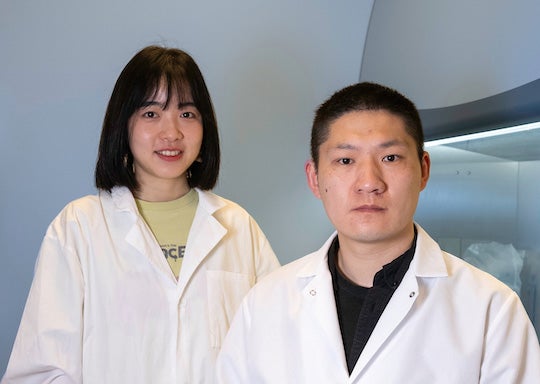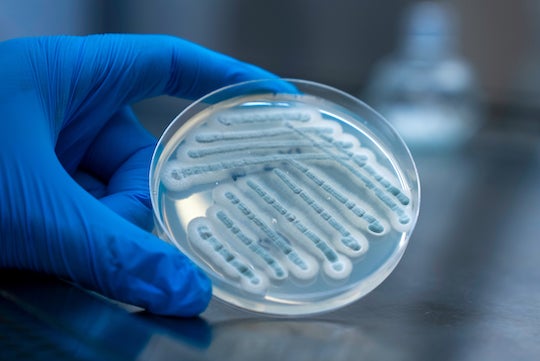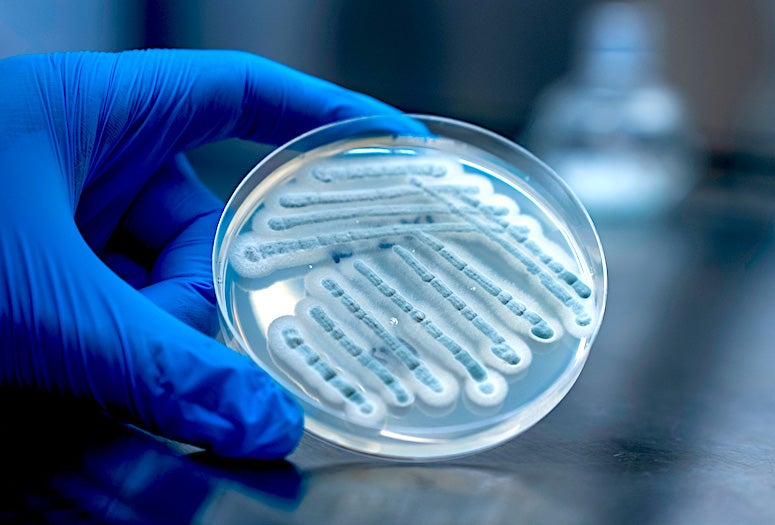Many of the drugs we use to treat cancer and infectious disease are ⎯ or derive from ⎯ natural products, but it’s difficult to know exactly how nature assembles them.

Retracing nature’s steps, Rice University chemical engineer Xue Gao and her team mapped out the full series of enzyme-powered reactions a marine fungus uses to produce 21R-citrinadin A, a complex molecule with anticancer properties.
In the process, Gao and her collaborators identified a new enzyme, CtdY, which is the only one of its kind known to break an amide bond, according to the study published in the Journal of the American Chemical Society.
“CtdY belongs to a large family of enzymes known as cytochrome P450s that perform a variety of different functions and are being studied for their potential use in industrial and pharmaceutical settings,” Gao said. “However, none of the P450s documented so far can break an amide bond.
“Amide bonds are found in all proteins ⎯ they’re the ones linking the amino acids together. It’s a fundamental, very stable type of bond.”
The enzyme’s ability to cleave amide bonds could make it a useful tool for creating new drugs.
“The fact that CtdY can do this is quite remarkable,” said Qiuyue Nie, a postdoctoral researcher in the Gao lab who is one of the lead authors of the study. “It holds significant promise for the pharmaceutical industry,” she said.
The enzyme is notable not only because it can break a highly-stable bond, but also because it does so for a very complex molecular structure.
“You want to maintain the rest of this structure and only want to break this single, hard-to-break bond ⎯ this is a very specific and difficult task,” Gao said.

Once CtdY breaks the amide bond ⎯ which has a circular 3D structure ⎯ a group of seven other enzymes intervene to complete the assembly of the 21R-citrinadin A molecule.
“Once it opens the ring, all the other enzymes are able to perform oxidation and install oxygen-hydrogen groups in a highly precise way,” Gao said. “It’s like CtdY brings the Christmas tree home, and then these other enzymes come together to decorate it.”
The Gao lab has been working for years to uncover all the steps involved in the production of the 21R-citrinadin A compound, which has been shown to be effective against leukemia in rats and human throat cancer cells, according to Shuai Liu, a Rice postdoctoral researcher who is the study’s lead co-author.
The newly identified enzyme is one of several discovered by the Gao lab that can perform singular catalytic functions such as controlling chirality and facilitating the Diels-Alder reaction.
“This really is a complete story,” Gao said. “We used gene knockout, heterologous expression, mutagenesis studies, enzymology and so on to solve nearly every single step in the biosynthesis of this compound. Over 20 enzymes assemble and coordinate to produce the molecule. I find it fascinating that enzymes work cooperatively in this way to produce this wonderfully complex molecule.”
Gao is Rice’s T.N. Law Assistant Professor of Chemical and Biomolecular Engineering and an assistant professor of bioengineering and chemistry.
The National Institutes of Health (R35GM138207) and the Robert A. Welch Foundation (C-1952) supported the research.
-30-
- Peer-reviewed paper:
-
Fungal P450 deconstructs the 2,5-diazabicyclo[2.2.2]octane ring en route to the complete biosynthesis of 21R-citrinadin A | Journal of the American Chemical Society | DOI: 10.1021/jacs.3c02109
https://doi.org/10.1021/jacs.3c02109
Authors: Shuai Liu, Qiuyue Nie, Zhiwen Liu, Siddhant Patil and Xue Gao
- Image downloads:
-
https://news-network.rice.edu/news/files/2023/07/230608_Qiuyue-Nie-Shuai-Liu_Gustavo-05206.jpg
CAPTION: Qiuyue Nie (left) and Shuai Liu. (Photo by Gustavo Raskosky/Rice University)
https://news-network.rice.edu/news/files/2023/06/230608_Qiuyue-Nie-Shuai-Liu_Gustavo-05214.jpg
CAPTION: Over twenty enzymes are involved in the production of the 21R-citrinadin A molecule. (Photo by Gustavo Raskosky/Rice University)
- Related stories:
-
Rice scientists reengineer cancer drugs to be more versatile:
https://news.rice.edu/news/2023/rice-scientists-reengineer-cancer-drugs-be-more-versatileNew enzyme could mean better drugs:
https://news.rice.edu/news/2023/new-enzyme-could-mean-better-drugsRice University scientists get fungi to spill their secrets:
https://news.rice.edu/news/2023/rice-university-scientists-get-fungi-spill-their-secretsXue Sherry Gao wins CAREER Award:
https://news.rice.edu/news/2022/xue-sherry-gao-wins-career-awardEnzyme from fungi shows molecules which way to turn: https://news.rice.edu/news/2021/enzyme-fungi-shows-molecules-which-way-turn
RNA-editing tool a fast, sensitive test for COVID-19:
https://news.rice.edu/news/2022/rna-editing-tool-fast-sensitive-test-covid-19Engineers enlist fungi to advance against disease:
https://news.rice.edu/news/2020/engineers-enlist-fungi-advance-against-disease - Links:
-
The Gao Laboratory: https://gaolab.rice.edu
Department of Chemical and Biomolecular Engineering: https://chbe.rice.edu/
Department of Chemistry: https://chemistry.rice.edu/
George R. Brown School of Engineering: https://engineering.rice.edu
BioScience Research Collaborative: https://brc.rice.edu/
- About Rice:
-
Located on a 300-acre forested campus in Houston, Rice University is consistently ranked among the nation’s top 20 universities by U.S. News & World Report. Rice has highly respected schools of Architecture, Business, Continuing Studies, Engineering, Humanities, Music, Natural Sciences and Social Sciences and is home to the Baker Institute for Public Policy. With 4,552 undergraduates and 3,998 graduate students, Rice’s undergraduate student-to-faculty ratio is just under 6-to-1. Its residential college system builds close-knit communities and lifelong friendships, just one reason why Rice is ranked No. 1 for lots of race/class interaction and No. 4 for quality of life by the Princeton Review. Rice is also rated as a best value among private universities by Kiplinger’s Personal Finance.

